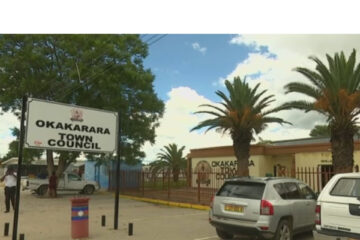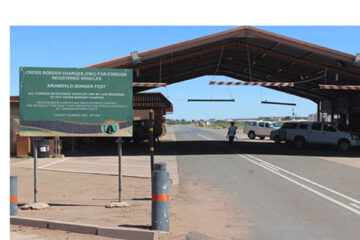Martin Endjala
The department of geological survey in the Ministry of Mines and Energy (MME) is currently conducting a study to determine whether the occurrence of earthquakes in the country is associated with mining activities.
Over the weekend, the ministry recorded two earthquakes.
The first earthquake occurred on 9 November at about 27 kilometres southwest of Gross Barmen in Okahandja at 09h03 AM local time.
The second earthquake took place on 10 November at about 10 kilometres southwest of Opuwo, recorded at 12h04 AM.
According to the deputy executive director for geological survey, Gloria Simubali, the earthquakes registered local magnitudes (ML) of 3.7 and 4.2 at latitude (Y) of 22.169 degrees south and longitude (X) of 16.511 degrees east as well as latitude (Y) 18.122 degrees south and longitude (X) 13.759 degrees east, respectively.
“The two earthquakes were recorded at a shallow depth of less than 10km,” she said.
It was also captured by eight seismic stations from the Namibian seismological networks, namely, Windhoek, Kamanjab, Rundu, Aus, Ariamsvlei, Opuwo, Katima Mulilo and Gobabis.
Three seismic stations from the South African seismological network also captured the earthquakes.
She advised people who find themselves faced with earthquakes indoors to go outside safely or hide under the table.
Mako Sitali, a senior geologist, confirmed that the ministry is undertaking the study following the recent occurrence of earthquakes in the country.
“We are currently collecting data in the Erongo region to specifically study the seismicity/earthquake behaviour and whether it is associated with mining activities in that area and this is quite a new project that we are currently still working on,” she indicated.
Sitali explained that, up to date, they have not yet been able to associate the earthquakes occurring in the country with mining activities.
Sitali further explained that there are various causes of earthquake activities, and one of them could be mining activities, which are classified as mining-induced earthquakes.
“However, this cannot be confirmed unless there is a dedicated study specifically focused on mining-induced seismicity or earthquakes. Which we are currently trying to determine,” she said.
She clarified that earthquakes are not season-orientated, but they can occur any time, anywhere, without being forecasted.
She said dry seasons whereby the pressure variations within the earth’s crust may trigger some movements and also in wet seasons the same movements due to fluid movements may be triggered.
”I wouldn’t necessarily say there is really an increase in seismic activities. What I would rather say is just the improved communication and seismic monitoring that is going on as opposed to previous years,” she said.
In the early 2000s, Namibia only had three operational seismic stations, which made it complex to accurately detect seismic signals or earthquakes.
Recently, the extensive use of social media has accelerated the dissemination of earthquake information.
The ministry typically records one or two events per week, most of which go unreported because of their small magnitudes.
“Yes, we do record on average of approximately 10 events monthly with local magnitudes ranging from 1.0 to 3.9,” she explained.
She stated that in most cases these events are not felt by people, and this is mostly attributed to the fact that, firstly, the magnitudes are too low, and secondly, the epicentre usually falls under sparsely populated areas.
Sitali said the geological setting equally plays a vital role in terms of the level of vibration triggered.
According to her, areas with loose soils typically experience higher ground vibration compared to areas with compacted rocks, where the vibration is typically minimal. This vibration is also highly dependent on the size of the rocks.
The MME seismic catalogue records that earthquake activity in Namibia dates back to the 1900s. In 1910, an earthquake of magnitude 5.5 occurred in Keetmanshoop, and in recent years, the ministry has recorded earthquakes of magnitude 5.6 in 2009 and 2021.



